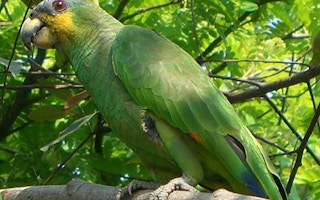The responses of wildlife species when their natural habitat is converted into urban areas are many and varied. Urbanisation is one of the leading causes of biodiversity loss around the globe, while, at the same time, some species are not only able to adapt to life in urban areas but actually thrive and grow more abundant than they might have in their natural surroundings.
Some cities have thus been declared urban conservation hotspots — but research published last year shows that while those cities might help preserve robust populations of otherwise threatened species, they do not help preserve the crucial ecological functions of those species.
This is an important distinction to make because the urban population is expected to grow by 1.35 billion people by 2030, which will in turn drive the expansion of urban areas worldwide by some 1.2 million square kilometres (more than 463,000 square miles), according to a 2012 study. That means that, by 2030, there could be three times the amount of global urban land cover that existed in 2000.
Of the animals that adapt to life in Earth’s growing urban areas, some of them will surely be threatened with extinction, making conservation efforts in cities imperative. A 2014 study that looked at 54 cities around the globe, for instance, found that about a third of them harbored threatened birds.
Urban conservation hotspots may shelter viable populations of threatened species, but that doesn’t mean those species will still be performing tasks like seed dispersal that natural ecosystems rely on for healthy functioning. “Cities may constitute refuges for threatened species and save them from extinction, but their ecological functions in the wild may become extinct,” Jose Tella, a research professor at the Estacion Biologica de Doñana in Sevilla, Spain, told Mongabay.
Tella co-authored a paper published in the journal PeerJ last year that detailed the findings of two case studies of globally threatened parrot species in the Dominican Republic: the Hispaniolan amazon (Amazona ventralis) and the Hispaniolan parakeet (Psittacara chloropterus).
Álvaro Luna, also a researcher with the Estación Biológica de Doñana, led the research team that performed a large-scale roadside survey in 2017 across the Dominican Republic in order to estimate the relative abundance of the birds in three different habitat types: natural habitats, rural habitats, and urban areas.
“
Cities may constitute refuges for threatened species and save them from extinction, but their ecological functions in the wild may become extinct.
Jose Tella, research professor, Estacion Biologica de Doñana
The researchers conducted informal interviews with local people to gather information on how humans have impacted parrot populations in the past and the present. “We also looked for foraging parrots to assess their potential role as seed dispersers, an ecological function that has been overlooked until very recently,” Luna and co-authors write in the paper.
The team found that there were a “negligible” number of Hispaniolan amazons and Hispaniolan parakeets present in rural areas and that population numbers for both species were “very low” in the remaining natural habitats in the Dominican Republic.
“They were generally between one and two orders of magnitude lower than that of congeneric species inhabiting other Neotropical ecosystems,” the researchers write. But relative abundances in cities were six times higher than in natural habitats for the Hispaniolan parakeet and three times higher for the Hispaniolan amazon.
“People indicated hunting for a source food and to mitigate crop damage as causes of parrot population declines, and a vigorous illegal trade for parrots (131 individuals recorded, 75 per cent of them poached very recently), mostly obtained from protected areas where the last small wild populations remain,” Luna and team write.
“We observed parrots foraging on 19 plant species from 11 families, dispersing the fruits of 14 species by carrying them in their beaks and consuming them in distant perching trees. They discarded undamaged mature seeds, with the potential to germinate, in 99.5 per cent of cases, and minimum dispersal distances ranged from 8 to 155 [metres].”
If these species and the ecological functions they provide are allowed to disappear altogether from natural habitats and only continue to persist in urban areas, that could have “long-term, unexpected effects on ecosystems,” the researchers add. “Our example demonstrates how two cities may soon be the last refuges for two endemic parrots if overharvesting continues, in which case their overlooked role as seed dispersers would be completely lost in nature. The functional extinction of these species could strongly affect vegetation communities in an island environment where seed-dispersal species are naturally scarce.”
Luna and team argue that while conservation plans must take into account urban populations of threatened species, “greater efforts are needed to restore their populations in natural habitats to conserve ecological functions.”
This story was published with permission from Mongabay.com.










